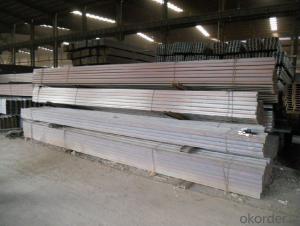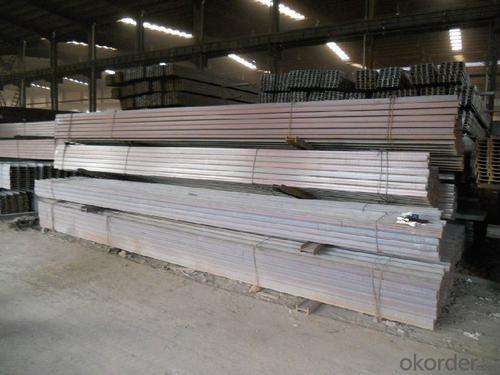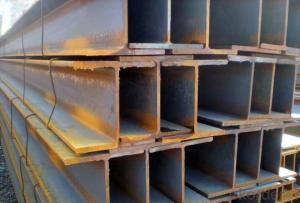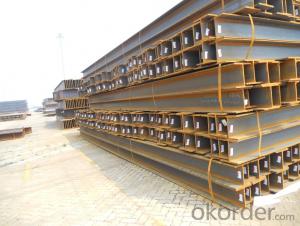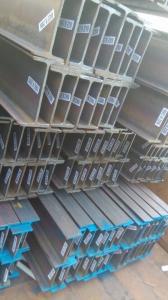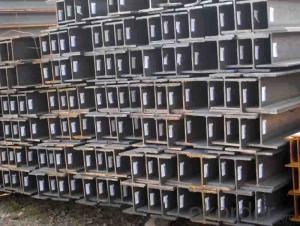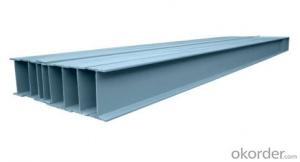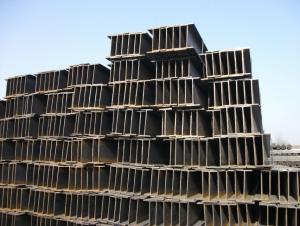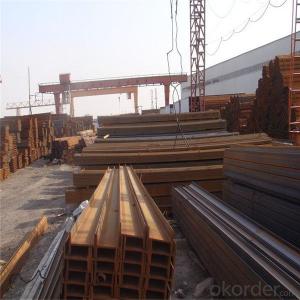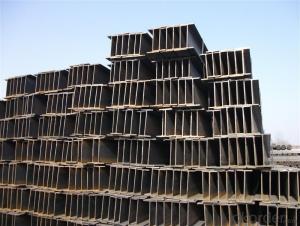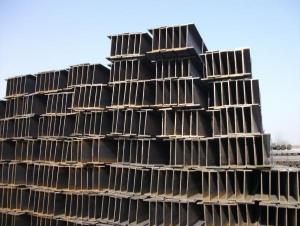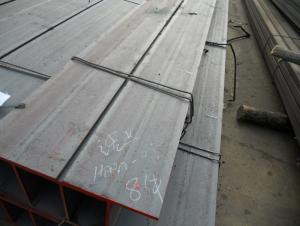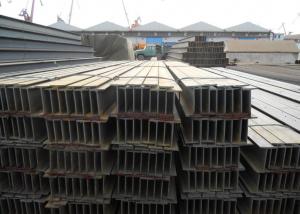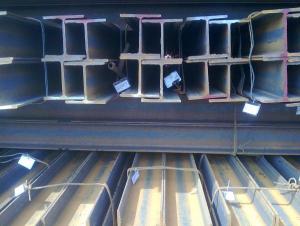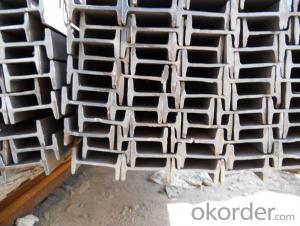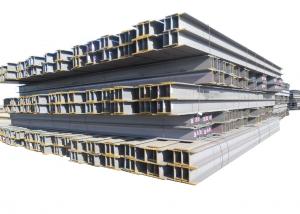European Standard IPE100/IPE120 High Quality
- Loading Port:
- China main port
- Payment Terms:
- TT OR LC
- Min Order Qty:
- 50 m.t.
- Supply Capability:
- 10000 m.t./month
OKorder Service Pledge
OKorder Financial Service
You Might Also Like
Specification
Product Description of European Standard IPE100/IPE120 with High Quality
Specifications
1.Standard: EN10025
2.Material: S235JR or Equivalent
3.Length: 6m, 12m
4. Size:
| Size(mm) | Mass(Kg/m) |
| 100*55*4.1 | 8.10 |
| 120*64*4.8 | 10.40 |
Usage & Applications
Commercial building structure;
Pre-engineered buildings;
Machinery support structures;
Prefabricated structure;
Medium scale bridges.
Packaging & Delivery
1. Transportation: the goods are delivered by truck from mill to loading port, the maximum quantity can be loaded is around 40MTs by each truck. If the order quantity cannot reach the full truck loaded, the transportation cost per ton will be little higher than full load.
2. With bundles and load in 20 feet/40 feet container, or by bulk cargo, also we could do as customer's request.
3. Marks:
Color mark: There will be color marking on both end of the bundle for the cargo delivered by bulk vessel. That makes it easily to distinguish at the destination port.
Tag mark: There will be tag mark tied up on the bundles. The information usually including supplier logo and name, product name, made in China, shipping marks and other information request by the customer.
If loading by container the marking is not needed, but we will prepare it as customer's request.
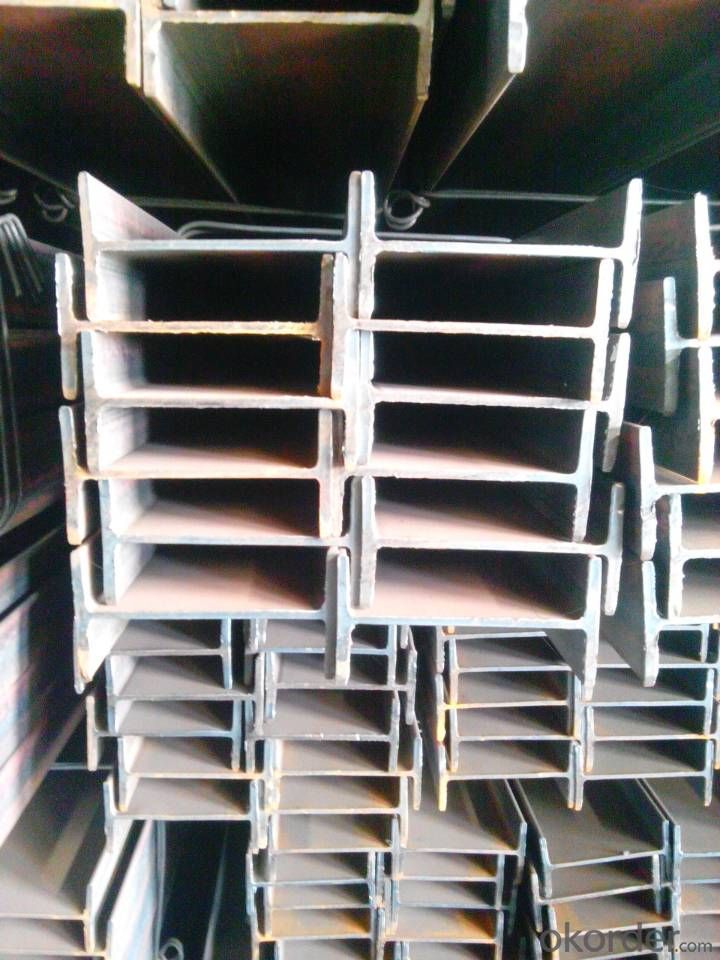
- Q: What is the average cost of steel H-beams?
- The price of steel H-beams can differ depending on different factors like their size, weight, and quality. Typically, the cost of steel H-beams ranges from $500 to $2000 per ton. Nevertheless, it is crucial to bear in mind that these prices may change due to fluctuations in the market and the rates set by each supplier. Furthermore, the quantity and location of the purchase can also impact the final price. Thus, it is advisable to consult multiple suppliers and compare prices in order to obtain a more precise estimate for the average cost of steel H-beams.
- Q: How do steel H-beams compare to I-beams in terms of strength?
- Steel H-beams are generally stronger than I-beams due to their wider flange and greater cross-sectional area, which allows them to withstand higher loads and provide better structural support.
- Q: H Steel 30, one, 15, how much is 1 tons?
- Small steel: small steel, middle, round, square, flat steel processing and use, similar to large steel, small diameter round steel is often used as building steel
- Q: H steel column calculationHow do you calculate the amount? And what are the steps and formulas for this calculation?
- H steel is welded; HWHMHN is the hot rolled HW H steel is the height and width of flange is basically the same; mainly used for reinforced concrete frame column steel column, also known as rigid steel column; in steel structure is mainly used for HM H type steel column and steel I-beam flange height of airfoil is a variable cross-section on web portion thick and thin outer flange; H steel is uniform HWHMHNH is known as H steel
- Q: Can the section steel butt joint in the end?
- Bolt connection also requires lining plate, pay attention to bolt size, quantity and spacing. To calculate whether thin-walled steel itself will be crushing, the solution is solder paste board, and bolt holes. The principle is that the strength of the butt joint is not weaker than that of other parts, and there is no greater stress.
- Q: What are the limitations of using steel H-beams?
- Using steel H-beams presents several drawbacks. Firstly, their weight and size make transportation and handling challenging, resulting in higher transportation costs, especially for long distances. Additionally, the installation of steel H-beams may require specialized equipment and infrastructure, leading to increased expenses. Secondly, steel H-beams have limited design flexibility since they are typically produced in standard sizes and lengths. This lack of customization often necessitates additional modifications, such as cutting, welding, or altering, which prolong construction time and add to costs. Thirdly, steel H-beams are prone to corrosion and require regular maintenance to prevent rusting. Exposure to moisture, chemicals, and environmental factors gradually weakens their structural integrity, leading to a shorter lifespan and the need for repairs or replacements. Moreover, steel H-beams have inferior fire resistance compared to alternative building materials like concrete. During a fire, these beams can lose their strength and stability, potentially compromising the safety of the structure. Lastly, the production of steel H-beams contributes to a significant carbon footprint due to the energy-intensive processes involved. The extraction of raw materials, such as iron ore and coal, and subsequent manufacturing contribute to greenhouse gas emissions and environmental degradation. In conclusion, while steel H-beams offer excellent load-bearing capacity and structural strength, they come with limitations such as weight, inflexibility in design, susceptibility to corrosion, reduced fire resistance, and a high carbon footprint. These factors must be carefully considered when selecting steel H-beams as a construction material.
- Q: What are the design considerations for steel H-beams in earthquake-prone regions?
- The design considerations for steel H-beams in earthquake-prone regions primarily involve ensuring structural integrity and resilience. Some key considerations include selecting appropriate steel grades with high ductility and strength, designing for lateral loads and dynamic forces, incorporating proper bracing and connections to enhance stability, accounting for potential ground motion, and implementing effective seismic detailing to resist earthquake forces. Additionally, the design should consider local building codes and regulations specific to earthquake-prone regions to ensure compliance and enhance the overall safety of the structure.
- Q: What are the main parts of hot-rolled H steel? What kind of project is required to use H steel, and what kind of customer base is best to find when selling H steel?
- Laiwu actively developed with fire resistance, weather resistance, seismic series of H type steel construction, the advanced international standards of H steel, high strength cold rolling H steel varieties; development of light thin, unequal and unequal thickness profile of H steel; the development of railway vehicles with H transmission towers, weathering steel tower structure with H steel, H steel used for offshore oil platform and other products. Comprehensively upgrade the existing products of H steel.
- Q: What are the different types of connections used for steel H-beams?
- Different types of connections are utilized for steel H-beams, based on the particular application and load demands. 1. Welded Connections: Steel H-beams are commonly joined through welding, which involves melting the steel at the joint and merging it. These connections offer high strength and rigidity, making them suitable for heavy loads and structural purposes. 2. Bolted Connections: Bolts and nuts are used to secure H-beams, providing flexibility for disassembly and reassembly when necessary. This connection type is often employed in situations where easy installation and maintenance are important. 3. Riveted Connections: Although an older method, riveting can still be found in some older structures. It involves inserting metal pins, known as rivets, through pre-drilled holes and compressing them to create a permanent connection. 4. Moment Connections: When significant bending moments need to be transferred between H-beams, moment connections are used. These connections enhance rigidity and stability by resisting rotational forces, commonly found in building frames and structures experiencing heavy loads or seismic activity. 5. Shear Connections: Shear connections are designed to transfer shear forces between H-beams. This typically involves welding or bolting steel plates or angles to the webs and flanges of the H-beams, enhancing their load-bearing capabilities. 6. Pinned Connections: Pinned connections allow for rotation at the joint and are used in situations where flexibility and movement are required. These connections typically involve using pins or bolts to connect H-beams, allowing them to pivot or rotate. It is essential to consider factors such as load requirements, structural design, and specific application when selecting the appropriate connection type. Consulting a structural engineer or adhering to relevant building codes and standards is crucial when determining the most suitable connection type for steel H-beams in a given scenario.
- Q: Are steel H-beams resistant to termites?
- No, steel H-beams are not resistant to termites. Termites are known for their ability to infest and damage wood, as they feed on cellulose present in natural materials. Since steel H-beams are made of metal, they do not contain cellulose and are not susceptible to termite infestation. Therefore, steel H-beams are an ideal choice for construction projects in termite-prone areas, as they provide a strong and durable alternative to traditional wooden beams.
Send your message to us
European Standard IPE100/IPE120 High Quality
- Loading Port:
- China main port
- Payment Terms:
- TT OR LC
- Min Order Qty:
- 50 m.t.
- Supply Capability:
- 10000 m.t./month
OKorder Service Pledge
OKorder Financial Service
Similar products
Hot products
Hot Searches
Related keywords
